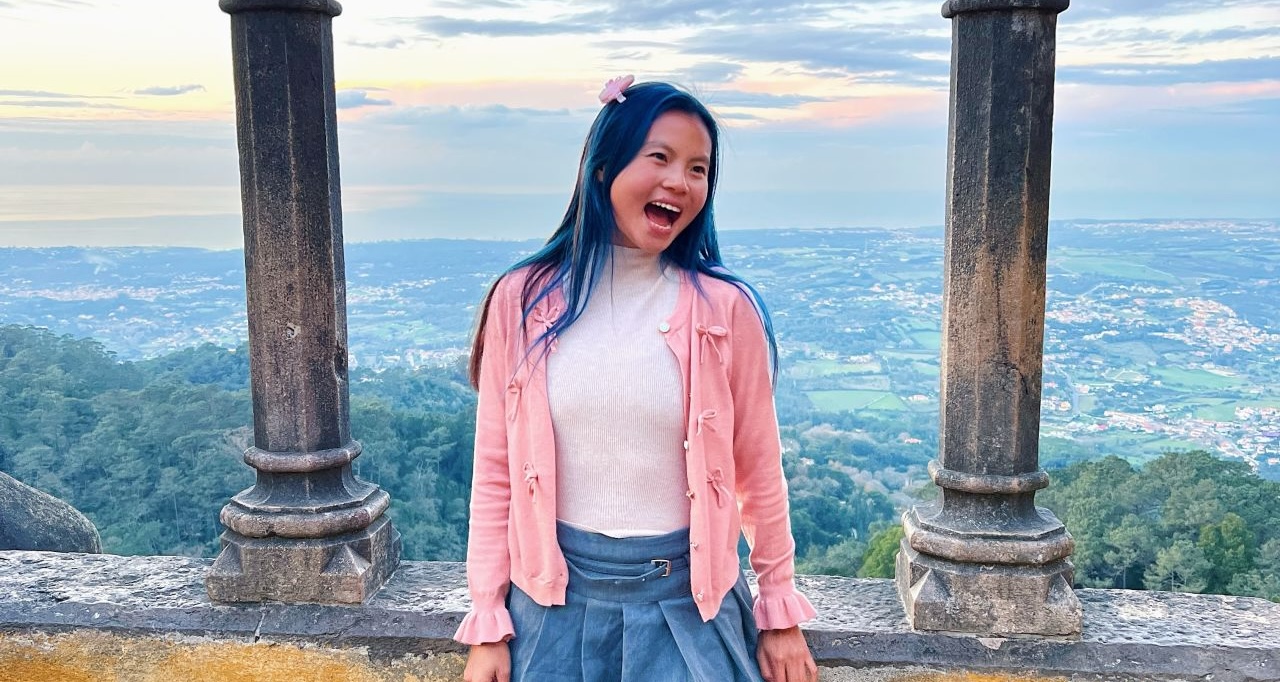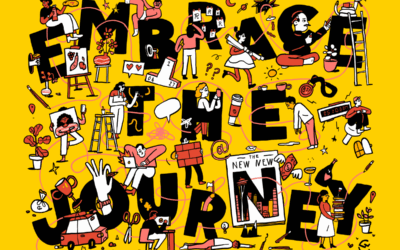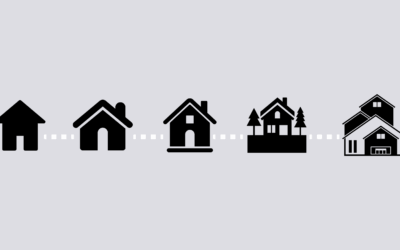It’s 2025, and we are effectively saturated with sanitized professional personas. Standing out as a designer or a creative requires more than just a polished resume and a good body of work. A great personal brand demands authenticity, vulnerability, and a willingness to share your whole self.
This was the core message woven throughout a LinkedIn live discussion between Nick Power, Head of Marketing at Noun Project, and Grace Ling, founder of Design Buddies, on “Personal Branding for Creatives: Build a Network & More Opportunities”.
Grace is the Founder of Design Buddies, a massive design community. She is a designer, illustrator, community builder, content creator, competitive runner, and world traveler (with visits to over 40 countries). She’s built an impressive personal brand across various social media networks, spoken at over 100 events, and has been featured in New York Times Square and Wall Street Journal. Her career also includes several design roles at Electronic Arts (EA).
The live conversation, with over 100 attendees, offered insights into how to get started with building a personal brand, what to focus on as you grow, and what to avoid as well.
An Unconventional Path: From Aspiring Artist to Global Community Leader
Grace Ling’s journey into the design world is anything but linear, embodying a philosophy of “try everything” rather than being laser-focused on one particular skillset. But it didn’t start that way.
Growing up in Cupertino, California – the heart of Silicon Valley – she faced immense family pressure to conform to traditional career paths: “doctor, engineer, lawyer, or failure”.
Yet, she longed to be an artist, drawing kawaii anime art and finding graphic design inspiration in the MMO RPG game Maple Story. She even reached max level in Maple Story, leading adult players as a 14-year-old girl, an experience that later inspired her to work in the gaming industry.
Because of so much external pressure, Grace initially pursued bioengineering and computer science in college, even telling people she was pre-med to fit a certain career storyline.
She candidly admitted to hating memorization in pre-med and struggling immensely with computer science, often being the slowest in her class. Despite interning as a “virtual rowdy robotic surgery game developer intern,” she yearned to draw and felt the corporate environment was too formal. Even after obtaining a Master’s in computer science, her uncertainty lingered.
The turning point came with the discovery of UX design, which attracted her because it “pays really well, you don’t need to code, and you can still be creative and artistic”.
Despite facing significant “ghosting” and imposter syndrome from recruiters, this shift sparked the creation of Design Buddies on Discord during COVID.
What started as a simple idea quickly grew into one of the world’s largest design communities, boasting almost 100,000 members.
Realizing the power of visibility, Grace decided to “make myself famous and document my journey on LinkedIn”.
This strategy paid off, leading her to land her first UX designer job at Electronic Arts (EA), a “dream job” given her love for games like Sims.
After nearly four years, driven by a desire for less conformity and a corporate structure, and making more money through brand deals than her corporate salary, she decided to “yolo it” by quitting to focus on Design Buddies full-time.
Today, Design Buddies has four full-time employees, is building productivity tools, running cohorts and partnerships, and creating content at scale.
Grace herself is deeply passionate about content creation and personal branding, hosting a podcast called “How Creators Make Money” and now exploring acting, modeling, and comedy.
Her journey underscores a vital lesson: it’s okay to pivot multiple times, especially when pursuing diverse interests.
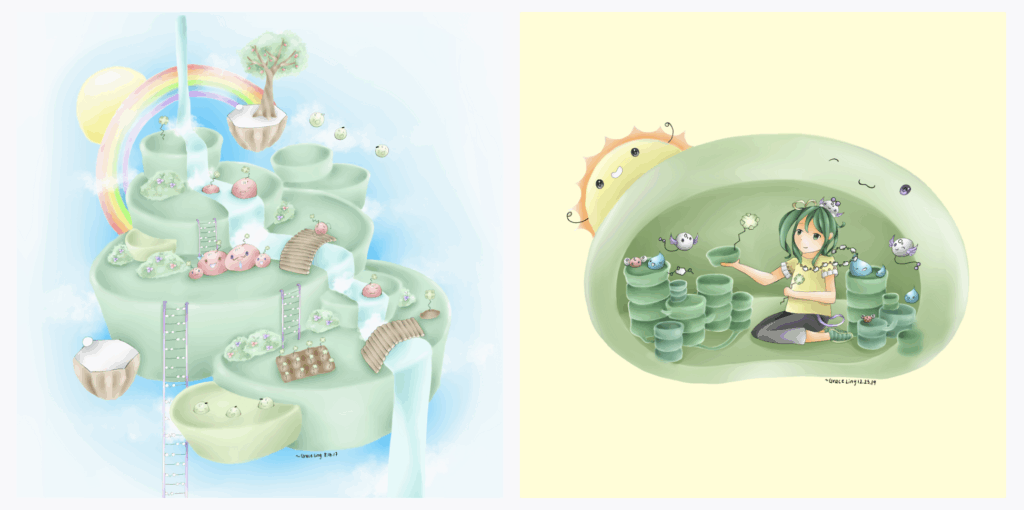
Traits Of A Strong Brand: Authenticity, Vulnerability, and Growth Mindset
Grace’s approach to building a personal brand is characterized by a radical commitment to authenticity and vulnerability.
She attributes her success to a “lack of caring about what other people think of me and taking every piece of criticism as constructive feedback”.
This thick skin was forged early, as an “awkward kid” with few friends who posted anime art and personal writings on platforms like Deviant Art and Tumblr. She encountered trolls and hate comments even as a teenager. This experience taught her to view negative comments either as valuable feedback or as reflections of the critic’s own unhappiness.
Writing became a foundational skill for Grace, helping her communicate, process thoughts, and eventually land brand deals as early as the age of 16. She later translated this to LinkedIn, starting in 2020, by posting once a week to document her UX design journey. Last year, she ramped up to posting daily.
Vulnerability is a cornerstone of her content strategy. On Tumblr, she noticed that her posts sharing “something more vulnerable like about how I had a bad day or felt really sad because I didn’t feel included in this friend group” garnered more support.
She applies this same principle to LinkedIn, believing that sharing “bad days” and difficult reflections helps people feel seen and heard in their own struggles.
She mentioned a recent example about receiving feedback that her content was no longer helpful for junior designers, a criticism that initially hurt her. However, when she addressed it with transparency to her audience, it resonated deeply because nobody wants to be locked into a single persona forever.
Grace also emphasizes storytelling and the “hero’s journey” in her content.
She acknowledged the “dopamine rush” of having popular posts and recognized her own human desire for “shiny metrics” as something that anyone building a personal brand will need to balance.
A critical insight she shared was not limiting herself to a niche, despite conventional advice to focus on a single lane. While a niche can be good for initial growth, Grace believes “you’re much more than that” as a person, and the future of building a strong personal brand is sharing more dimensionality.
“I just don’t want my entire identity to be ‘how to get a job’ stuff,” she stated. This evolution, she notes, is natural: “the person you were a year ago or even last week — that doesn’t mean it’s the person you are today”.
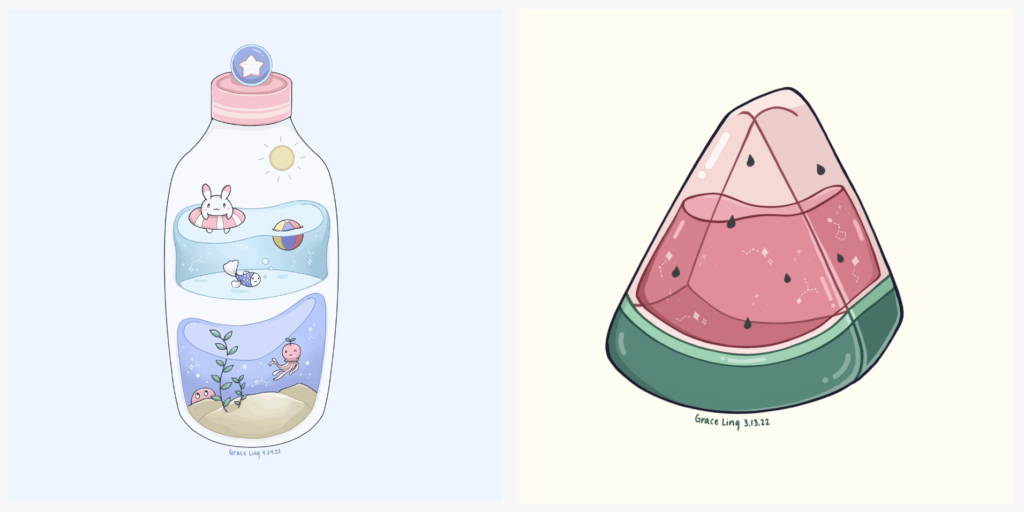
The Rewards: Opportunities, Connections, and Freedom
Building such an authentic personal brand has yielded significant returns for Grace, extending far beyond mere online presence.
Financial Independence: Perhaps most strikingly, her personal brand enabled her to quit her corporate tech job and become self employed. She revealed that brand deals on LinkedIn, primarily with design and creativity companies like Adobe, Framer, Notion, and HubSpot, paid significantly more than her corporate salary. She earns between $1,000 to $5,000 per sponsored post, often doing “one or two a week,” which was enough to take a chance on herself — that’s independent of her income from Design Buddies. This demonstrates how a strong personal brand can create direct income streams, offering a powerful alternative to traditional employment.
Expanded Network and Real-Life Connections: More importantly, Grace highlighted how her brand connected her with fascinating people and led to numerous “awesome in-person like and real life friends”. Her current living situation in a creator house in LA, for example, came partially from a friend who followed her on LinkedIn and approached her at an event.
Her network in LA, consisting of actors and full-time content creators, even inspired her to pursue acting and modeling, skills she views as enhancing her everyday presentation and connection with people. This diverse network and approach to building skills, she believes, prevents “group think” and enriches her life with new opportunities more meaningful than just money.
Career Flexibility and Diversification: Grace views her personal brand as a crucial element of diversification, much like diversifying financial investments. She doesn’t put all her eggs in the Design Buddies basket, maintaining her personal brand across LinkedIn, Instagram, Twitter, TikTok, and YouTube as a safeguard should one platform or venture “crash and burn”. This strategic approach offers a sense of security and freedom, allowing her to pursue projects that align with her evolving interests rather than being confined to a single path.
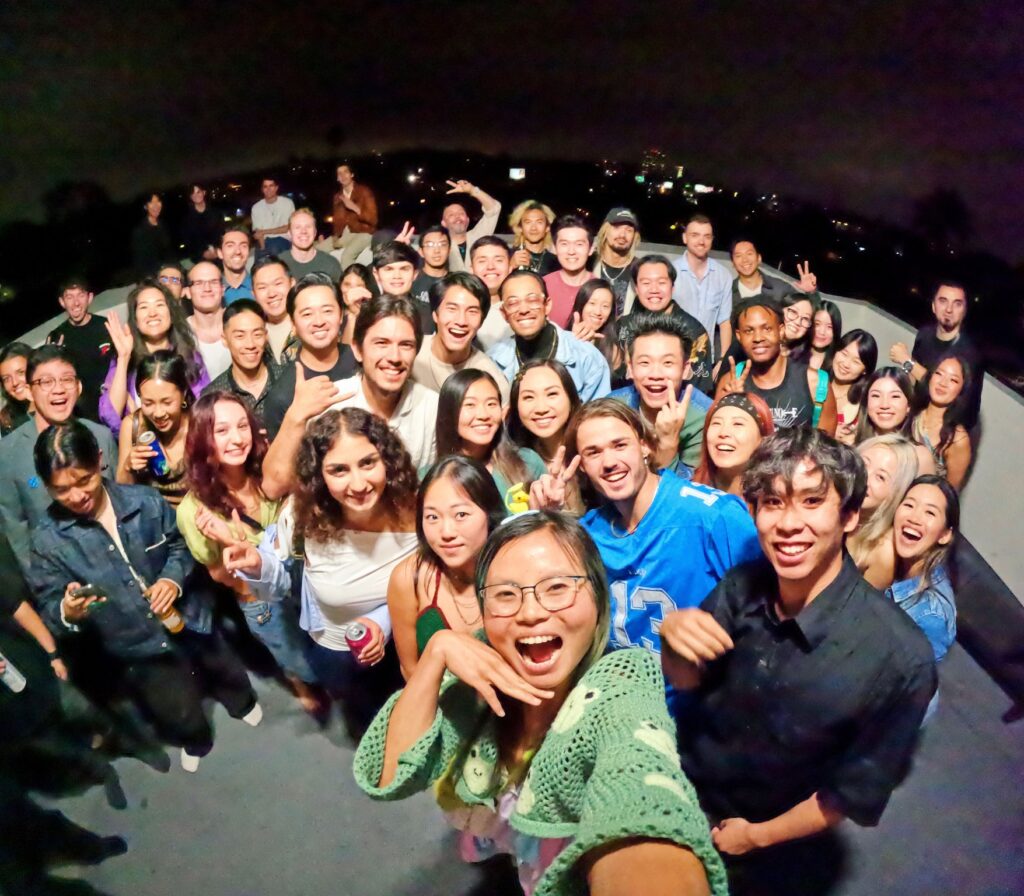
Downsides and Regrets to Building A Personal Brand
Building a personal brand, especially one rooted in vulnerability, is tough. Aside from dealing with haters, the ups and downs of building in public, and the noise of social metrics measuring her journey, Grace shared her primary regret: Not following her heart and getting started sooner.
“I spent too much time studying, trying to climb the corporate ladder, and not living my life.”
She described college as her “worst” years due to being “sad left in my room laser focused on one thing”.
This over-focus on success and job titles, like being too invested in her career track at EA, led to her self-worth being tied to external validation.
Additionally, it impacted people’s perceptions of her. People began to see her only as a connection to EA, which was tough because she knew: “I’m more than my job title”.
Her journey to overcome this involves “making up for lost time,” focusing on relationships, and having more fun in life. This reflection underscores the importance of a balanced life, where self-worth is internally derived and encompasses a multitude of experiences, not just career achievements.
Practical Advice: How Creatives & Designers Can Build A Personal Brand
For designers and creatives looking to get started building a personal brand, Grace offers several actionable insights:
• Define Your Goals: Your personal brand should reflect your objectives. If you are seeking a job, tailor your content to the industry’s expectations and tone. If aiming for content creation and brand deals, “just be yourself,” as brands value authenticity and can tell phony approaches to personal branding.
• Start Making Content: “Find what you’re interested in and just start making content”. A great starting point is a LinkedIn post introducing yourself, your interests, passions, and goals. Some of your content will be good, some of it will not. But you can’t figure out what works for you until you start.
• Verbalize Your Goals: Don’t be shy about stating what you’re looking for in your content. Grace explicitly asked for help when seeking her first UX design job, finding that making goals known allows others to assist. If you don’t directly ask, you can’t get the help you need.
• Share Value and Insights: Even early-career professionals have valuable advice. Share insights from your own experiences. If you’re just entering the workforce, share a point of view for those just graduating college. Your experiences are what makes your personal brand unique and valuable.
• Don’t Bury Your Head In the Sand With New Tools: Grace encouraged designers to leverage new technology and tools, even if they seem threatening or challenging to the status quo. She mentioned tools like Bolt, Repl.it, and learning basics of prompt engineering to build things independently. That adaptability, flexibility, and willingness to learn new tools is highly valued.
• Collaborate and Network: Seek opportunities to collaborate with others and attend design events in your city. If there are no events, consider holding one yourself as Grace has done with Design Buddies meetups and creator houses. Curate the room at events to ensure good, productive energy and intentional connections.
• Don’t Let Job Titles Define You: Avoid judging yourself or others based on job titles. “Everyone’s human. Your job title shouldn’t be you,” she asserted. Bring a diverse set of skills. Show your whole personality and your range of interests. Create meaningful patterns but don’t be afraid to be more than a career when building a personal brand.
• Master The Fundamentals: As technology does more to automate creative work, Grace advised focusing on becoming a great designer by mastering foundational principles and taste. Creatives should hone fundamental skills in visual design, typography, color theory, and craft, rather than getting distracted by negative narratives around technology. Showing that core identity of design knowledge and building a unique personal brand is a powerful way to stand out amidst industry instability and a competitive market.
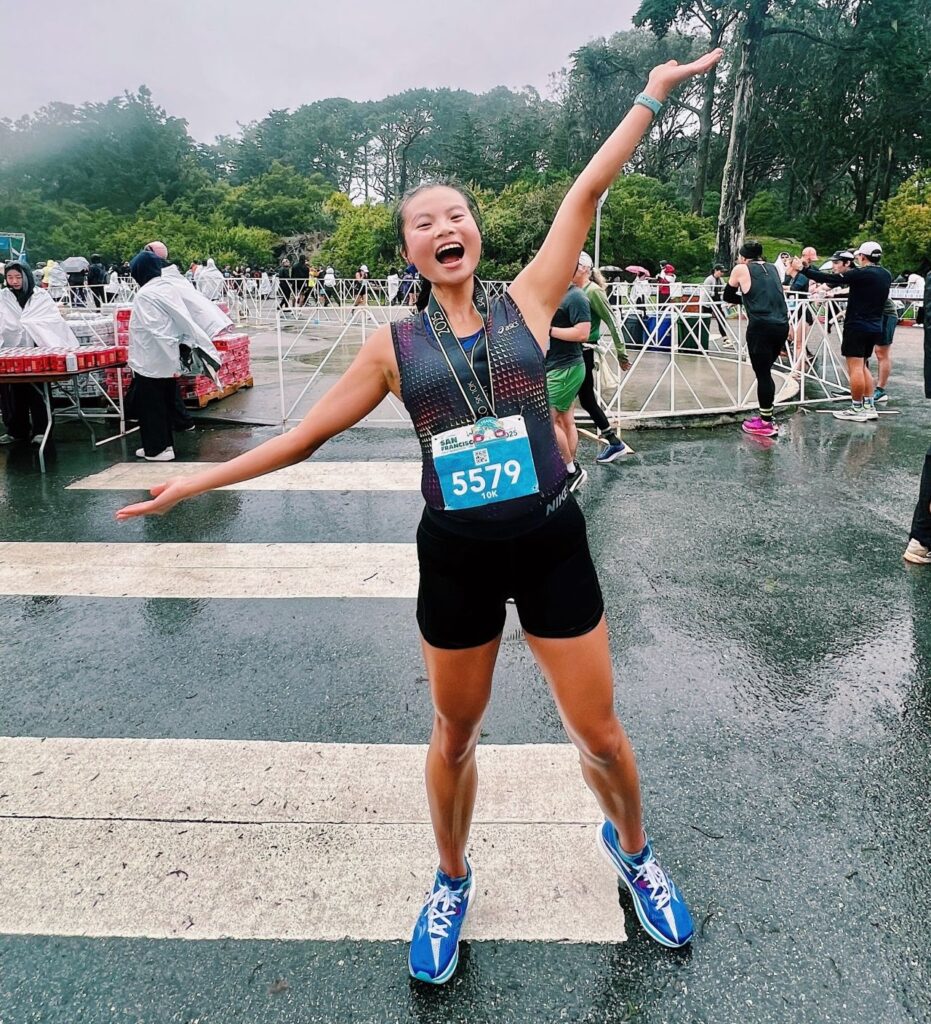
Design Buddies: A Community Built on Fun and Connection
Grace’s approach to Design Buddies mirrors her personal branding philosophy: it’s about fun and discovery rather than solely obsessing over growth. She started the community out of a simple need for connection – being bored, feeling isolated from designers, and facing rejections in her design job search.
The community’s rapid growth (10,000 members in a month, now nearly 100,000 across Discord, meetups, feedback sessions, and workshops) is a testament to building a network people want to be part of.
Grace remains an active participant, chatting with members five years later, and has hosted meetups in 10 countries across four continents. This dedication ensures the community remains “the most active it’s ever been”.
Her strategy for events is refreshingly simple: “How do I gather cool people and how do I maximize luck for these people?”
She emphasizes curating the room and vetting attendees for the right mix of genuine interest and diverse passions. This ensures that “if people are interesting, they will entertain themselves,” reducing the need for rigid programming and planning.
Conclusion: Be Yourself, Be Vulnerable, and Diversify
Grace Ling’s personal brand is a testament to the value of building a reputation across both digital channels and real life experiences. She champions the shift from rigid, niche-focused personas to a more fluid, authentic, and vulnerable approach of being a person people know, like, and trust in the creative community.
Grace’s journey – from a hobby artist constrained by career expectations to a global community leader and renaissance woman – exemplifies the transformative power of embracing one’s whole self.
For anyone looking to build a personal brand, the key takeaways are clear:
- don’t be afraid to be yourself even if you get negative feedback
- share your vulnerabilities, as they make others feel seen and heard in their own journey
- verbalize your goals so your network can join in on your story
- position yourself well to achieve those goals by creating content that aligns with where you want to go
- diversify your interests and platforms to de-risk your reliance on one particular personal brand asset
The most powerful asset a creative can possess is their unique, evolving human story.
As Grace aptly puts it, “show up as yourself because you’ll attract the right people.”
Where to Follow Grace Ling, Founder of Design Buddies
To learn more about Grace or keep up with her journey in building a personal brand, follow her on these channels:
Join Design Buddies Community & Join the Design Buddies Email List


